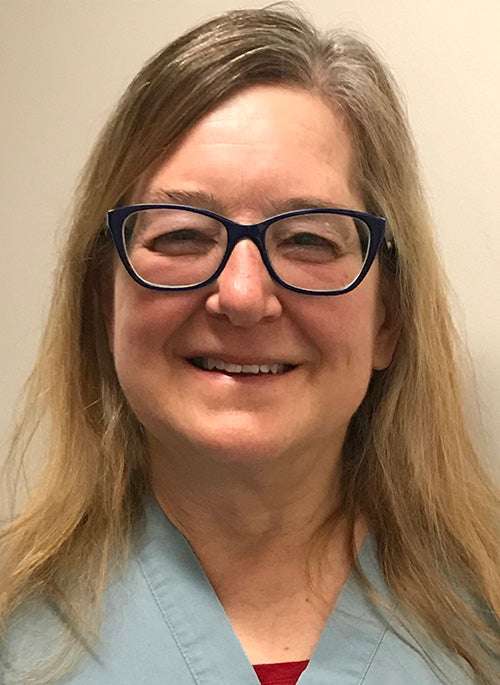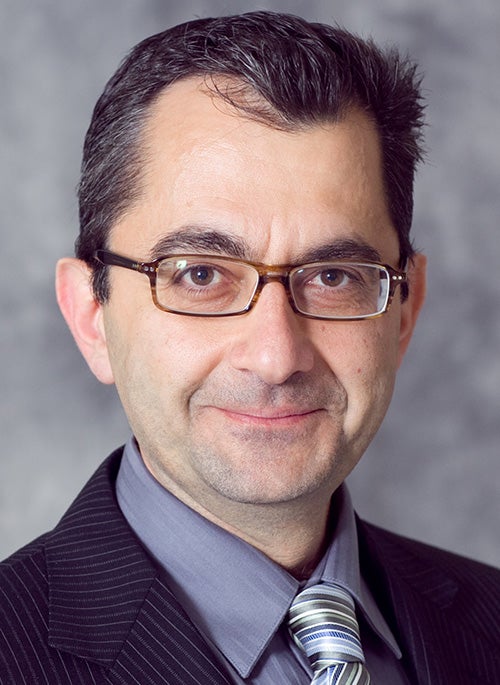Spotlight Feature

Michele Bucciero, M.D.
Clinical Director, Obstetrics and Gynecology
Saint Anthony Hospital, Chicago

Michelle Korzec, CNM
Director of Midwifery
Saint Anthony Hospital, Chicago

Eden Takhsh, M.D.
Chief Quality Officer, Chairman of Obstetrics and Gynecology
Saint Anthony Hospital, Chicago
Background: For more than a century, Chicago’s Saint Anthony Hospital has been serving residents in its surrounding neighborhoods on the city’s Southwest and West sides. This independent, non-profit community hospital is proud that it cares for people regardless of their nationality, religious affiliation or ability to pay. Its core mission of serving all in need of care is reflected in its recently launched maternal health care initiative and intervention program. Of the nearly 1,400 maternity patients who Saint Anthony treats annually, over 96% are Black or Latino; a majority of whom are medically underserved with significant economic hardship. In order to better understand higher than usual newborn readmission rates happening in its patient community and ways to eliminate racial disparities impacting maternal health, Saint Anthony set out to study the issues and develop solutions to improve outcomes.
With funding and technical assistance from the health equity grant collaboration between the American Hospital Association’s Institute for Diversity and Health Equity (IFDHE) and Blue Cross Blue Shield of Illinois (BCBSIL), Saint Anthony developed a new initiative to mitigate maternal health disparities and ensure equitable maternal health care, regardless of patients’ financial status or other societal factors that influence patients’ overall health and well-being. Michele Bucciero, M.D., clinical director in obstetrics and gynecology for Saint Anthony Hospital, and Eden Takhsh, M.D., clinical department chair, performance and quality improvement at Saint Anthony, explain how the hospital’s maternal health initiative and intervention program is making a difference.
Why did your hospital decide to move forward with this new initiative?
“Everything we do at Saint Anthony Hospital is about health equity so this grant to specifically address racial disparities in maternal and newborn health care was a natural opportunity for us to continue our commitment to improving care,” said Dr. Bucciero. “It is our goal to bring quality health care — equitable health care — to the residents who we serve regardless of health insurance status, ability to self-pay and citizenship documentation.”
As the designated labor and delivery hospital for Esperanza Health Centers and other Federally Qualified Health Centers (FQHCs) in the community, Saint Anthony cares for more than a thousand maternity patients each year, who are mostly from economically-challenged Chicago neighborhoods with primarily Black and Latino populations.
Saint Anthony has established a culture of providing high quality care and patient-centric programs to meet the needs of expectant mothers who may face chronic illnesses such as diabetes or hypertension in addition to socio-economic issues such as poor housing, low income, gun and gang violence-ridden neighborhoods and food insecurity. “All of these issues need to be addressed if the health outcomes of our mothers and newborns are truly going to improve,” said Dr. Bucciero.
Other measures the hospital takes to address racial disparities include taking a team-based, patient-centered approach by collaborating with midwives. Every patient in Saint Anthony’s labor and delivery department is seen by a midwife and Michelle Korzec, CNM, oversees this initiative as the hospital’s director of midwifery.
“All of these issues need to be addressed if the health outcomes of our mothers and newborns are truly going to improve.”
What is the goal of your program and how do you anticipate your efforts will impact patients?
Saint Anthony’s quality of patient care and dedication to maternal health equity has kept its severe maternal morbidity (SMM) rate at or below 1.6%. While that is below the National Perinatal Information Center’s (NPIC) average of 2.1%, it’s higher than the 0.5% - 0.7% SMM rates in middle- and upper-class Chicago neighborhoods just a few miles away.
“We are specifically addressing the rate of newborn readmissions within seven days and 28 days of discharge,” said Dr. Takhsh. Last winter, prior to the COVID-19 pandemic, 0.9% of Saint Anthony’s discharged newborns were readmitted within seven days and 2.0% within 28 days, compared to NPIC’s average of 0.7% and 1.1% respectively. One intervention to help drive down newborn readmission rates is the newly launched phone call-based postpartum visit program which Saint Anthony estimates could decrease SMM and readmission rates by 50%. Specifics, such as education around proper hygiene and common vaccinations of family members can factor into lowering newborn readmissions.
Additionally, Saint Anthony now sends moms and babies at risk of readmission home with blood pressure monitors for self-checks and with rectal thermometers for taking their newborn’s temperature. “Our families with newborns will be positively impacted by receiving more tools, education and greater medical support which will help them avoid unnecessary and sometimes traumatic emergency visits,” explained Dr. Takhsh.
If you have a community partner, how did this partnership factor into efforts to build this new program?
We have three community partners and they are very engaged in reaching out to our ethnically diverse population so residents may gain access to diabetes education classes. Our Community partners are: HANA Center, which serves the Korean American as well as multiethnic immigrant communities, the Albany Park Community Center and the Indo American Center.
We are in communication with each community partner, providing them guidance from the hospital’s perspective. For example, a presentation on diabetes prevention and management was provided for the Albany Park Community Center, where online diabetes education classes are offered. In an effort to reach those whose primary language is not English, our marketing team at the hospital developed program information fliers and the community partners helped create versions in different languages.
“Knowing and understanding the socioeconomic conditions and other barriers impacting our patients absolutely informs our processes to build a better and more equitable program.”
If you have a community partner, how did this partnership factor into efforts to build this new program?
Partnering with Esperanza Health Centers was a natural choice, since Saint Anthony is its designated labor and delivery hospital. The continuum of care is very important in the success of this program. Our expecting mothers receive prenatal care from our FQHCs throughout their pregnancy.
Obstetrical services at Saint Anthony include labor, delivery and postpartum care, which is provided in collaboration with the FQHC providers. The final step of the postpartum treatment process closes the loop back to the outpatient FQHC care center.
Does a clearer understanding of socioeconomic conditions impacting patients’ and other barriers to achieving health equity help you build a better program? How?
“Knowing and understanding the socioeconomic conditions and other barriers impacting our patients absolutely informs our processes to build a better and more equitable program,” Dr. Bucciero explained. “For example, in September 2019 when Illinois announced it was moving to addressing state-wide maternal morbidity and mortality rates among racially diverse women, Saint Anthony’s Maternity Center had already closely reviewed all of its policies and processes to identify areas where the hospital is excelling and most importantly, where the hospital can improve and take action to enact change on saving maternal and infant lives.”
Dr. Bucciero added, “We seek to constantly improve our processes with new ground-breaking initiatives including policies that address the opioid crisis and improving postpartum access to care.” Saint Anthony also credits Dr. Bucciero for being instrumental in introducing the Improving Postpartum Access to Care (IPAC) model, which is now used as a best practices model for other hospitals in the Illinois Perinatal Quality Collaborative. (https://ilpqc.org/)
What information would you share with others about advancing health care equity within their organization?
The goal is to provide evidence as to the effectiveness of this initiative in reducing some of the gaps in maternal and neonatal health outcomes. These interventions can be implemented in other institutions and public health departments to achieve similar or better outcomes — successfully addressing racial disparities in maternal and newborn health care.
